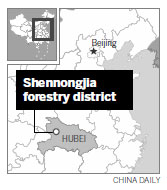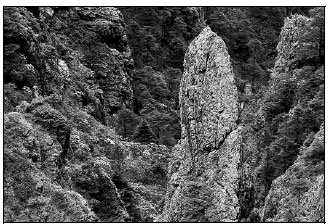Heritage sites protected on ground and from space
Updated: 2016-07-21 07:54
By Wang Kaihao(China Daily)
|
||||||||
Multiple methods are being used to protect China's newest UNESCO World Heritage Site, according to the Ministry of Housing and Urban-Rural Development.
Shennongjia, a forest area in central Hubei province, was the most recent to be listed as a World Natural Heritage Site on July 17. The zone covers a 73,300-hectare area with another 41,500-hecatre buffer zone.
According to Ai Weiying, deputy head of the Shennongjia Forestry District government, the number of annual visitors will be capped at 798,000 annually - 14 percent more than last year - as the number of visitors is expected to increase as a result of the area's placement on the list.
"The quota was set based on a comprehensive analysis of the environment and the capacity of our tourism infrastructure," Ai said.
He added that more eco-friendly shuttle buses will be introduced at the site to better manage the tourists, who will only be allowed to follow preplanned itineraries within the zone.
"Drones will patrol around the area to keep a close eye the whole site," said Wang Daxing, director of the Shennongjia Natural Reserve Administration. "A monitoring system has been established."
Shennongjia is the biggest primary forest in Central China, the only intact subtropical forest ecological system in the world's middle latitude regions and home to many rare wild animal species, including more than 1,300 golden monkeys.
Xie Zongqiang, a researcher at the Chinese Academy of Sciences, said Shennongjia's outstanding biological diversity and significant indication of ecological processes are key reasons it became a World Natural Heritage site, so the protection of the living environment for animals remains a focus.
Zhang Linwei, deputy director of the ministry's urban construction department, said satellite sensing technology will be used to monitor not only Shennongjia but other World Natural Heritage Sites in China. The technology will help spot possible hazards and changing conditions.
"High-tech approaches are necessary for the protection over these sites," Zhang said. "However, the public's participation and supervision cannot be ignored. The title of World Heritage is not the goal. This is a chance to educate and nurture people's consciousness safeguarding those places."
He added that combining protection and utilization of resources at the heritage sites is a significant innovation.
In 2015, China's previous World Natural Heritage sites received 180 million visitors, took in 7 billion yuan ($1.04 billion) in revenue and offered 90,000 job opportunities to local communities, which is a crucial way to develop the economy for some poverty-stricken areas, he said.
"But, reasonable plans and sound rules have to be made before development," Zhang said.
China now has 11 World Natural Heritage Sites, second in the world after Australia, and four mixed cultural and natural sites.
wangkaihao@chinadaily.com.cn
|
Scenery at Shennongjia, a forest area in Hubei province, which was recently listed as a UNESCOWorld Natural Heritage. Du Huajun / Xinhua |

(China Daily 07/21/2016 page5)
- Endangered elephants relocated by crane in Africa
- THAAD news met by DPRK missile launches
- DPRK top leader guides ballistic rocket test-firing
- Turkey's failed coup to further consolidate Erdogan's power
- Boris Johnson says UK not abandoning leading role in Europe
- Armed man attacked passengers on a train in Germany

 Heavy rain, floods across China
Heavy rain, floods across China
 Super-sized class has 3,500 students for postgraduate exam
Super-sized class has 3,500 students for postgraduate exam
 Luoyang university gets cartoon manhole covers
Luoyang university gets cartoon manhole covers
 Top 10 largest consumer goods companies worldwide
Top 10 largest consumer goods companies worldwide
 Taiwan bus fire: Tour turns into sad tragedy
Taiwan bus fire: Tour turns into sad tragedy
 Athletes ready to shine anew in Rio Olympics
Athletes ready to shine anew in Rio Olympics
 Jet ski or water parasailing, which will you choose?
Jet ski or water parasailing, which will you choose?
 Icebreaker Xuelong arrives at North Pacific Ocean
Icebreaker Xuelong arrives at North Pacific Ocean
Most Viewed
Editor's Picks

|

|

|

|

|

|
Today's Top News
Ministry slams US-Korean THAAD deployment
Two police officers shot at protest in Dallas
Abe's blame game reveals his policies failing to get results
Ending wildlife trafficking must be policy priority in Asia
Effects of supply-side reform take time to be seen
Chinese State Councilor Yang Jiechi to meet Kerry
Chinese stocks surge on back of MSCI rumors
Liang avoids jail in shooting death
US Weekly

|

|








